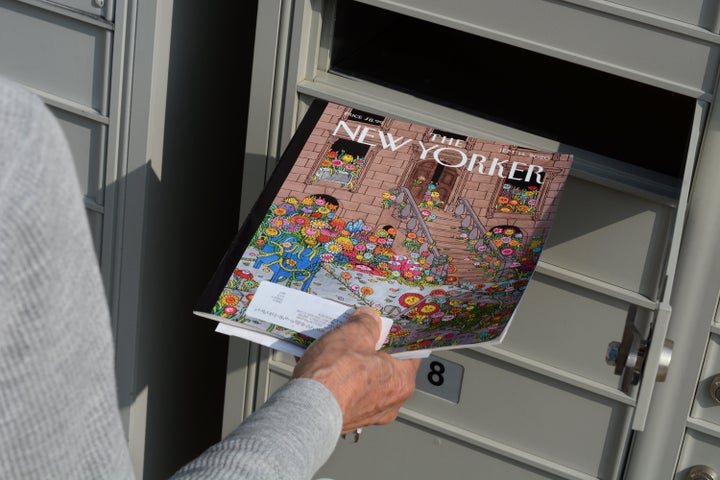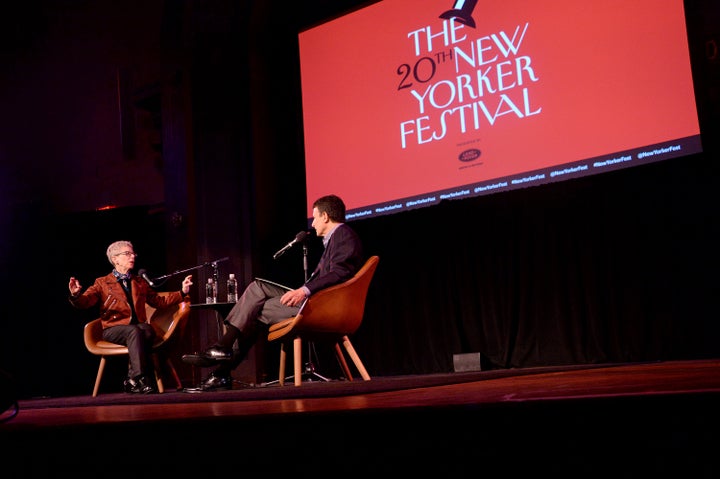
Production of the nation’s premiere weekly magazine of journalism and commentary could grind to a halt if The New Yorker’s union and management don’t reach a deal after two and a half years of contract negotiations.
Staffers have warned of an imminent strike if they can’t close the gap on outstanding issues like pay and health care. The union, which is part of The NewsGuild of New York, has laid out plans for a picket line that would urge readers not to share stories and pressure the magazine’s writers not to produce new work or even handle edits on works in progress.
The union is made up of 120 employees, mostly in editorial and production roles, but does not include staff writers and other high-profile contributors. The magazine’s leadership has indicated to those contributors that they would not be put in the position of having to cross a picket line if the union declared one.
That suggests management is confident it can reach a deal or, if it cannot, editors might simply pause production on the magazine, which has a circulation of more than 1 million, as they bargain amid a prolonged work stoppage.
While the union has asked readers not to read or share links in the event of a strike, its bigger leverage may be in the print product. The union has calculated that a magazine known for its fastidiousness could not come close to meeting its own standards without its core staff to assemble the magazine each week.
Closing new issues would almost certainly require scabs to perform the duties of strikers. The union includes every fact-checker on staff. The magazine also has its own house style, which would make it harder to fill in for staff copy editors during a strike.
Gili Ostfield, a production staffer at the magazine and union member, said readers would not like what landed in their mailboxes.
“If they put out a magazine without us, it would absolutely be a substandard product,” said Ostfield. “I don’t think it’s something The New Yorker would be proud of. I think it would be a real stain on The New Yorker’s reputation to publish a magazine during a strike.”
“Quite honestly, it would be a stain on David Remnick’s reputation,” she added, referring to the magazine’s longtime editor.
Remnick declined to comment on the dispute and whether The New Yorker has plans to produce a print magazine during a strike. A spokesperson for Condé Nast, the magazine’s parent company, said it had made “tremendous progress on our potential contract terms with the NewsGuild recently. We hope to have a contract soon so that real wage increases find their way to our union employees.”
HuffPost reached out to about 20 staff writers and featured contributors to ask whether they would recognize a picket line. Most did not respond.
“I think it would be a real stain on The New Yorker’s reputation to publish a magazine during a strike.”
- Gili Ostfield, New Yorker staffer
Hua Hsu, a staff writer, told HuffPost he would honor the union’s requests if the magazine continued operating during a strike.
“As a writer, I rely on the editors, checkers, etc, so it’s not a very hard decision to support them,” he said in an email.
Staff writer Jane Mayer said the magazine’s editors assured them they would not be pressured to cross.
“As a former union member at a newspaper that went on strike, I know how rough these things can be, so instead I really hope the two sides can avoid a strike and reach a fair deal at the bargaining table,” Mayer wrote in an email.
Staffers unionized in June 2018 following a string of similar organizing efforts at other publications. Unions typically hope to secure a first contract within a year or a year and a half, but negotiations at The New Yorker have stretched on for 30 months.

The union says the company is resisting annual pay bumps that would keep pace with the cost of living in New York City. The two sides also have not reached agreement on layoff protections, limits on after-hours work and the right to freelance. The union has accused the company of bargaining in bad faith, a characterization the magazine disputes.
Ostfield said she believes the company’s bargaining posture stems in part from the magazine’s self-regard.
“Their attitude to bargaining has been that The New Yorker is so exceptional that it shouldn’t be subject to the kind of demands that a union would fight for, like basic dignity and fair pay in the workplace,” she said.
Throughout their prolonged negotiations, the union has tried to wield the magazine’s substantial cultural clout, already with some success.
Last year, when the magazine resisted granting staffers strong protections against arbitrary firings, the union called for a boycott of the magazine’s 2020 annual festival, prompting headliners Sen. Elizabeth Warren (D-Mass.) and Rep. Alexandria Ocasio-Cortez (D-N.Y.) to threaten to pull out of the event. The company and the union reached an agreement on the contract language, and the boycott on the festival was lifted.
On Tuesday night, the union members held a protest outside the West Village home of Condé Nast chief content officer Anna Wintour, widely known far beyond the world of New York media, particularly as the inspiration for Meryl Streep’s icy magazine editor character Miranda Priestly in “The Devil Wears Prada.”
The group chanted: “Bosses wear Prada! Workers get nada!”
One of Wintour’s neighbors was seen cheering and handing out drinks to union members.
Once again, the union is trying to leverage the reputation of the magazine, inviting readers and subscribers to show their support through an elegantly designed website with graphics in the style of the magazine. And, in a significant show of solidarity, the union posted testimonials from nearly a hundred staffers explaining why they’re willing to go on strike.
“We are the life of this magazine,” Carol Anderson, an editorial staffer, wrote in one. “We deserve to have more than scraps tossed from the opulent hand.”
Correction: This story originally said Warren and Ocasio-Cortez pulled out of last year’s New Yorker Festival. In fact, once the union lifted its boycott, the lawmakers took part as planned.